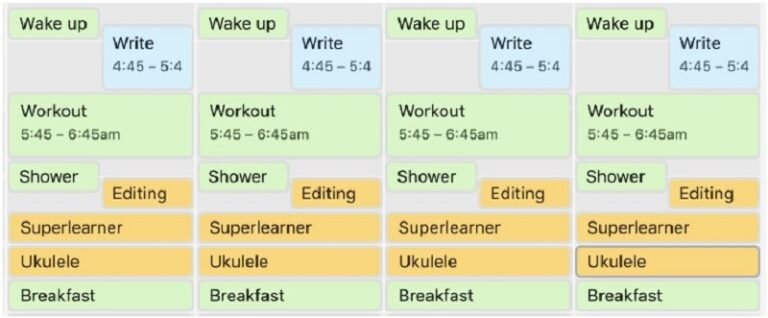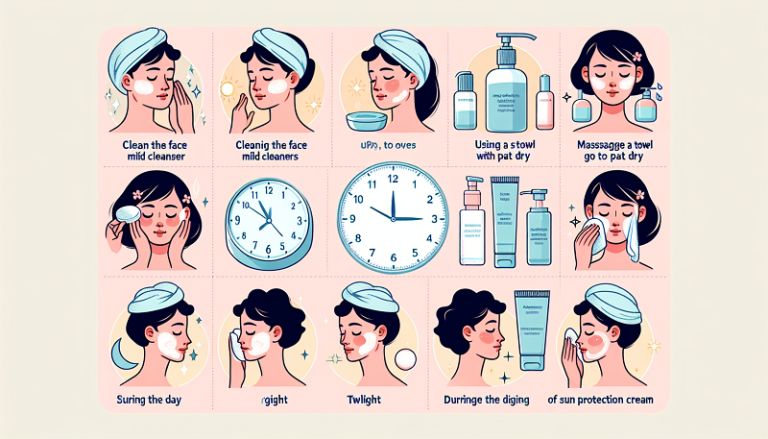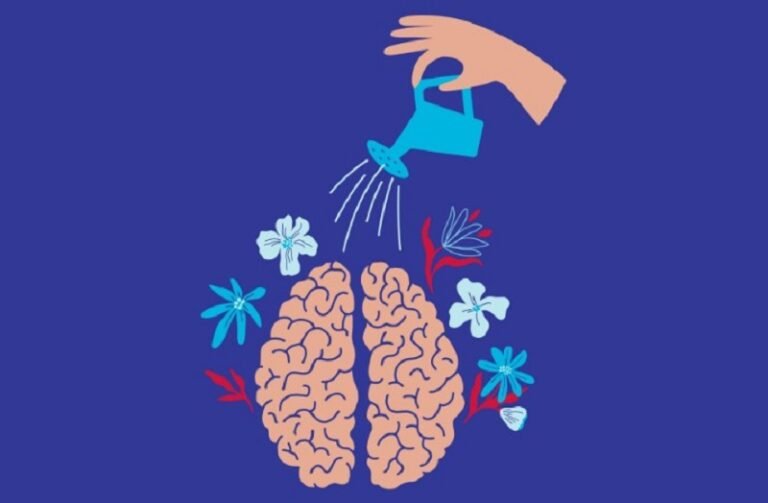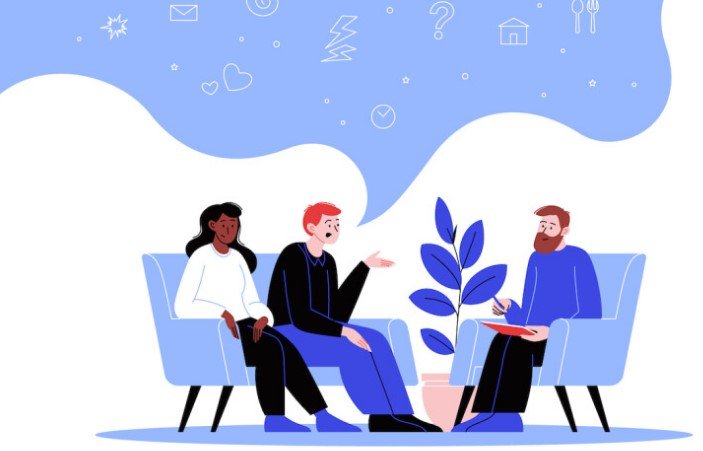Transforming Connections: Proven Tips for Effective Communication in Relationships
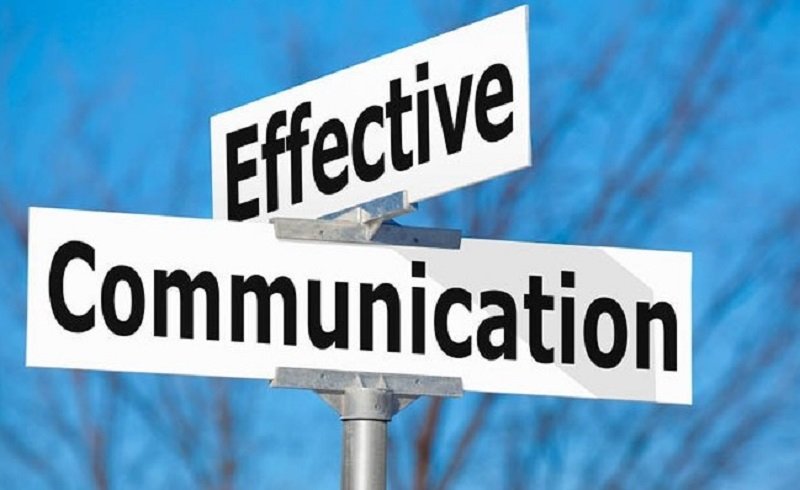
Establishing Effective Communication
Getting your chat-game on point is the bedrock of any good relationship. Figuring out why it’s so important and spotting the usual hiccups can help partners get along better.
Why Talking Matters in Relationships
Talking isn’t just talking, it’s the glue holding everything together. When you chat, you’re airing out your feelings, ideas, and what’s on your mind without drama. This chit-chat bonds you emotionally and makes life feel like something you share instead of just live.
In relationships, talking sorts out beef, keeps the love light burning, and makes sure everyone feels like they’re on the same wavelength (Plantation Relationship Counseling). No talk equals misunderstandings, and nobody likes a bad vibe or playing the guessing game.
| Why Good Talk is Good for Love |
|---|
| Sets up trust and respect |
| Squashes arguments nicely |
| Makes hearts connect |
| Builds that warm fuzzy feeling |
| Says, “I hear ya, and you matter” |
Things That Block the Chat
Communication blockers can mess things up and create messages that rub folks the wrong way. Knowing what gets in the way helps couples smooth out their talking skills.
Physical Blockers
Sometimes the scene itself, like noise or a crowded room, messes with heart-to-hearts. Find a quiet corner that lets you focus on each other.
Emotional Blockers
Feelings like fear or anger can make speaking out tough. When someone’s feeling edgy, it’s hard to get the words right. Spotting the feelings helps keep the chat open.
Different Life Stories
Varying backgrounds, traditions, or experiences can sometimes throw off the conversation game. Different viewpoints or expressions can lead to mixed signals. Taking time to dig into each other’s stories can close the gap.
Cultural Clashes
What’s normal for one might be off for another, culturally speaking. Knowing and respecting cultural vibes helps reduce clashes and smooth talking.
When Non-verbal Isn’t Clear
Body signals, from a nod to a frown, say a lot. Getting them wrong can mean trouble in paradise (Plantation Relationship Counseling). Tuning into these signals means fewer mix-ups and more understanding.
For more on smoothing these bumps, swing by our section on better talking tricks. Knowing what clogs the chatter helps couples build better, friendlier talking habits.
By tackling these chat barriers head-on and keeping the convo chill and clear, partners can create stronger, enduring bonds. Want more on how folks talk differently? Check out our piece on communication styles in relationships.
Enhancing Communication Skills
Getting your words through to someone isn’t just about talking; it’s a game-changer for building that solid connection. One way to seriously up your communication game is through active listening.
Active Listening Techniques
When it comes to active listening, it’s all about giving your partner your full attention and showing you care about what they’re saying. Here’s how you can do it:
- Paraphrasing: Say back what was mentioned, but with your own twist, to make sure everything’s clear.
- Clarifying Questions: Ask a few questions if something doesn’t quite add up.
- Acknowledgement: Give a nod or throw in a “Got it” or “Keep going” now and then.
- Empathy: Prove you get where they’re coming from emotionally.
Curious about how different communication styles play into this? Dig deeper here.
Benefits of Active Listening
Sticking active listening into your chats can work wonders, giving your communication a serious boost.
- Chops Misunderstandings Down: By paraphrasing and asking questions, you make sure everyone’s on the right track (Holding Hope MFT).
- Builds Trust: Showing you really listen displays respect and appreciation, paving the way for trust building trust in relationships.
- Boosts Intimacy: Truly getting your partner’s feelings can heat things up emotionally and physically (Holding Hope MFT).
Active Listening in Romantic Relationships
In the land of love, active listening is a power move. Here’s how you can put it to work:
- Get Emotionally Close: Tune in to emotions and echo back to tighten that emotional bond (Holding Hope MFT).
- Sort Out Conflicts: Clears the muddy waters and stops arguments from getting out of hand conflict resolution in relationships.
- Happy Vibes All Around: More connection and understanding tend to make everything feel a whole lot more rewarding (Holding Hope MFT).
Wanna get better at talking things through? Check this out: Boost your relationship communication skills. Active listening ties partners together, making it a must-have skill if you’re looking to step up your communication game.
The Real Deal with Non-Verbal Communication
Non-verbal communication is a big player in relationships, impacting how folks feel connected and understood. This part dives into how non-verbal signals, body language, and tone of voice play into smooth communication with your partner.
What’s Up with Non-Verbal Signals
When you’re chatting without words, it’s all about eye contact, facial expressions, and those little gestures. These non-verbal cues can speak louder than words ever will. Spot-on non-verbal communication can bring folks closer and help them get on the same wavelength, but if misunderstood, it might stir the pot (Plantation Relationship Counseling).
Key Pieces of Non-Verbal Chat:
- Eye contact
- Facial expressions
- How often you look at each other
- Gestures
- Body stance
- A simple touch
Knowing what each of these things means and reading them right can take the quality of chat between partners up a notch. For example, keeping eye contact shows you’re paying attention and want to be in sync, while dodging it might hint you’re not all that into it.
The Body Language Story
You ever notice how much a tilt of the head or a simple lean can say? Positive vibes like nodding or staying open can back up what you’re saying. But crossing your arms or stepping back might shout out a big “no thanks,” messing with the vibe between partners (Bayview Therapy).
Body Signals That Matter:
| Move | Means What? |
|---|---|
| Nod | You’re on the same page |
| Shoulder shrug | Eh, not too sure |
| Leaning in | Totally engaged |
| Arms crossed | Feeling on the defense |
Getting these moves means you’re more likely to pick up on what your partner’s feeling, leading to better hangouts. If you’ve got a thing for non-verbal vibes, check out more in our piece on relationship communication styles.
Nailing the Tone of Your Voice
Your tone’s like the cherry on top, bringing in nuances like volume, pitch, and sway. It packs an emotional punch words can’t match. Speak softly, and folks might feel your kindness; crank up the volume or sound harsh, and you might just tick someone off (Bayview Therapy).
Tone Breakdown:
- Volume
- Pitch
- How you pronounce words
- The rise and fall of your speech
Paying real attention to how your words come out can steer clear of mix-ups and make chats more positive. Dive into our guide on how to handle conflicts in love for more juicy info.
Mixing in these non-verbal tricks can totally change how couples communicate, boosting that deep connection. Getting the hang of these signals can shift relationship vibes to a happier place. Want more confidence in love? Check out tips on building that trust.
Building Empathy in Communication
Understanding Empathy
Empathy is the art of stepping into someone else’s shoes to genuinely feel what they’re going through. It’s about more than just nodding along; it’s about truly getting the emotional ride they’re on and seeing through their eyes, which links up closely with connecting well with others. Think of it as next-level understanding as opposed to sympathy, which only acknowledges someone’s plight from a distance (source: Everyday Speech).
Here we delve into why empathy is a trusty sidekick in fostering strong communication in any kind of relationship.
Components of Empathy
Let’s break empathy down into its essential parts:
- Cognitive Empathy: This is where your brain kicks in. It’s about figuring out what others are feeling or thinking, almost like reading their emotional script.
- Emotional Empathy: This is the heart’s realm. It’s not just about listening to someone’s story but actually riding the wave of their emotions alongside them.
- Compassionate Empathy: Here’s where thinking and feeling come together with a dash of action. You’re not just standing by; you’re rolling up your sleeves, ready to help ease the burden.
All these pieces come together to form a sturdy base for empathy in everyday chats and meet-ups (source: Everyday Speech).
Displaying Empathy Through Communication
Showing empathy when you talk can seriously boost your connections with others. Here’s a roadmap to practice empathy like a pro:
Active Listening
Active listening is the secret weapon for showcasing empathy. It’s not just about hearing words but making the other person feel like the most important part of the conversation. Try these tips:
- Eye Contact: Keeping your eyes on the speaker tells them they’ve got your full attention.
- Nods & Smiles: A nod here, a smile there – small gestures go a long way in showing you’re tuned in.
- No Interruptions: Let them finish. It shows respect and assures them that you’re there for the full story.
Curious for more? Check out our details on active listening tricks.
Verbal Expressions
Words matter when it comes to empathy. Using language like “I get what you’re feeling” or “That seems really tough” helps cement that emotional bond. It’s a way to put out those feelers that say, “I’m right here with you” (source: Everyday Speech).
Non-Verbal Cues
Actions often do the talking when it comes to empathy. Here’s how you can let your body do the work:
- Facial Expressions: From smiles to concerned frowns, your face is a billboard for your empathy.
- Body Language: An open stance says, “I’m all ears,” creating a comfy space for the other person.
- Touch: Sometimes, a light touch on the arm can say, “I’m with you” more than words ever could.
Keeping these signals in mind amps up your empathetic vibe (source: Everyday Speech).
When you weave these elements into how you interact, you’re on the road to building empathy and forming richer, deeper connections. For more handy tips, swing by our other reads on talking styles in relationships and gaining trust in relationships.
Fixing Messy Talk
Getting your words right is the secret ingredient for good vibes in any relationship. Spotting and ditching common missteps in chats can make those bonds even tighter. We’ll spotlight the usual chat blunders, tricks to boost your talks, and why a pinch of empathy is golden.
Goofs in Talking
Couples often trip over these blunders that put a wrench in smooth chats. Knowing these booby traps helps nip problems in the bud.
- Butting In: Cutting in mid-sentence can make your partner feel like a side dish, breeding irritation. The art of truly listening goes out the window if you keep stealing the mic.
- Mind Reading: Acting like you’ve got a crystal ball on what your partner thinks or feels without a check-in is a straight road to misunderstanding city.
- Getting Defensive: Throwing up walls instead of being wide open can turn a spat into a full-blown battle and slam the door on any real talk.
- Dodging Tough Talks: Skipping hard chats leaves a pile of unsorted mess, stirring up resentment faster than a pot of chili.
- Mixed Signals in Styles: When partners talk in different styles, it’s like they’re on different wavelengths, causing static and sparking off clashes (Marriage.com).
Making Talking Work
Using these tactics to dodge typical pitfalls can level up relationship chats.
- Tune In Fully: Real listening means soaking up every word from your partner, grasping, reacting, and tucking away what they say. It boosts understanding and naturally shows you care.
- Start with “I”: Sharing feelings with “I” helps keep blame off the table and eases real exchanges. Like saying, “I get upset when…” instead of “You set me off…”
- Ask, Don’t Tell: Tossing out open-ended questions stirs up deeper talks. This method lets partners unpack what’s on their mind.
- Feel What They Feel: Recognizing and echoing your partner’s emotions locks in their feelings and oozes empathy. Try something like, “I get why you feel…”
- Be Sharp and Present: Staying in the moment and sharpens your words to make talks clearer and misunderstandings as rare as unicorns.
- Peace Talk Skills: Knocking up on conflict skills is ace. Address squabbles coolly without heating things up and scout for mutual fixes (Better Health Victoria).
| Chat Trick | Perk |
|---|---|
| Tune In Fully | Amps up understanding and care |
| Start with “I” | Kicks blame and opens talks |
| Ask, Don’t Tell | Spurs deeper talks |
| Feel What They Feel | Shows care and anchors feelings |
| Be Sharp and Present | Narrows down mix-ups |
| Peace Talk Skills | Helps find common ground |
Why Empathy is a Relationship Power-up
Empathy’s all about catching someone else’s feelings and walking in their shoes. It’s a game-changer for keeping chats in the win column (Everyday Speech).
- Trust Building: Empathy lays down the trust tracks, where you genuinely get and care for how your partner ticks (LinkedIn).
- Chat Boost: Empathy makes chats sunnier, with more listening and fewer knee-jerk reactions, making the chat flow even smoother.
- Problem Solvers: When both sides feel each other’s emotions, empathy turns problem-solving into a team play, considering all angles.
- Respect & Care: Empathy means holding your partner’s feelings dear, making space for more respect and a warm, supportive smack-dab.
By weaving empathy into everyday chats, couples can polish up their communication game, nurture stronger ties, and land on the sweet spot of relationship joy. Check out our piece on building trust in relationships for more chatter tips.
Strengthening Bonds Through Communication
Effective Communication Dynamics
You know what makes a relationship tick? Good ol’ effective communication. It’s not just blabbering words; it’s about seriously getting each other. When couples master the art of chatting and more, they’re on solid ground. Imagine making eye contact, being all ears, and actually getting your point across without sounding like you’re from Mars. That’s the secret sauce to tackling relationship hiccups and those pesky emotional gray areas.
Here are some vital points to keep you and your partner on the same page:
- Active Listening: Don’t just hear; listen. Really tune in when your partner talks and give answers that show you care.
- Clarity: Speak clearly and get straight to the point. You’ll dodge misunderstandings and save energy.
- Consistency: Touch base regularly. It cements the relationship.
Importance of Verbal and Non-Verbal Alignment
It’s not just about what you say—it’s how you say it. Your arm gestures, facial expressions, and even how you look at each other speak volumes. In fact, these non-verbal vibes sometimes scream louder than words.
Non-Verbal Signals You Should Know About:
- Eye Contact: Proves you’re there in the moment.
- Body Language: Keep it cool and laid-back; it builds trust.
- Tone of Voice: Your voice inflection tells if you’re angry, happy, or anything in-between.
| Non-Verbal Cue | Impact |
|---|---|
| Eye Contact | Bridges the gap, creating a deeper connection |
| Body Language | Shows you’re open and approachable |
| Tone of Voice | Packs a punch in showing how you feel |
If your words and actions don’t line up, brace yourself for some mix-ups. So, watch out—make sure your gestures back up what you’re saying, or it might lead to a mess.
Seeking Help for Communication Challenges
Bring on the hurdles—it’s part of life, right? But sometimes, you need a bit of a helping hand to smooth things out. That’s where therapists and counselors come in, offering a treasure chest of tricks to polish your communication.
- Therapy and Counseling: Get professional advice to boost your chat game.
- Workshops and Seminars: Perfect spot for practicing communication hacks.
- Online Resources: Dive into articles and forums for a quick tip or two.
When problems pop up, jump on them fast. Letting them linger can breed bitterness and distance. A little guidance from an expert can steer you back to smoother waters, helping to mend and grow your relationship.
The Role of Listening in Relationships
Listening—it’s that secret sauce that can turn a shaky relationship into something rock solid. It’s the unsung hero of good communication, helping you understand your loved one and keeping that trust meter in the green.
Listening Tips for Effective Communication
Let’s talk about how to beef up those listening skills. Here are some easy-peasy tips to keep your conversations on track:
- Be All Ears: Give your partner your full attention. Ditch those pesky distractions and really soak in what they’re saying—it’s like giving them a VIP pass to your thoughts.
- Eyeball to Eyeball: Making eye contact isn’t just for awkward elevator rides; it shows you’re in the moment, connecting with the person speaking.
- Zip It: Resist the urge to butt in. Let them spill the beans first. Your turn will come, and they’ll know you respect their voice.
- Be a Feelings Detective: Use empathetic phrases like “Wow, that sounds tough” to show you’re tuned into their emotions.
| Tips for Effective Listening | Description |
|---|---|
| Be All Ears | Pay full attention to the person talking |
| Eyeball to Eyeball | Engage with eye contact |
| Zip It | Listen without interrupting |
| Be a Feelings Detective | React with empathy |
Want the full scoop on communication skills? Check out our guide on improving relationship communication skills.
Encouraging Open Dialogue
We all want to chat in a space that’s easygoing, right? Here’s how to keep the conversation flowing:
- Go for the Big Questions: Toss out questions that let them open up more than a can of worms. Keep it juicy, not just yes or no.
- Cheerleader Mode On: Celebrate good exchanges with encouraging words. Let your partner know they’ve been heard and appreciated.
- Spill the Beans: Share your inner thoughts and feelings to show you’re playing on the same team.
- Keep it Cozy: Make sure your talk zone feels relaxed and free from judgment so they can really open up.
| Strategies for Open Dialogue | Description |
|---|---|
| Go for the Big Questions | Promote detailed conversations |
| Cheerleader Mode On | Celebrate good communication |
| Spill the Beans | Foster trust with honesty |
| Keep it Cozy | Encourage openness without judgment |
Curious about how your style impacts your chit-chat? Swing by our article on communication styles in relationships.
Seeking Professional Support if Needed
Sometimes, despite all your ninja skills, things go south. That’s when you might want to call in the pros. A relationship counselor can:
- Spot the Usual Suspects: Highlight those nagging patterns and help you fix them.
- Pass Out Lifelines: Load you up with strategies that actually stick.
- Host with the Most: Provide a neutral turf where both of you can lay it all out without biting heads off.
- Future-Proof Your Love Story: Guide you in setting up long-lasting communication habits.
| Support Benefits | Description |
|---|---|
| Spot the Usual Suspects | Pinpoint and resolve negative patterns |
| Pass Out Lifelines | Share effective communication tools |
| Host with the Most | Neutral, open environment |
| Future-Proof Your Love Story | Sustain healthy communication |
For more tips on handling relationship hiccups, dive into our resources on conflict resolution in relationships and building trust in relationships.
Empathy in Effective Communication
Empathy is like the secret sauce in good chatter. It’s about getting what others are going through, feeling it with them, and reacting in a way that makes them feel they’ve got a buddy in you. Let’s dive into why it’s important, how words can show we care, and the magic of body language.
Understanding Empathy in Communication
When we’re talking empathy, we’re all about tuning into someone’s vibes. It’s got three parts:
- Cognitive Empathy: It’s like wearing someone else’s glasses—seeing their world for a sec.
- Emotional Empathy: Feeling their joy or sadness as if it’s your own.
- Compassionate Empathy: Not just feeling it, but getting in there and helping out.
Everyday Speech suggests this mix helps keep the chat respectful and inclusive, where everyone feels like they count.
Verbal Expressions of Empathy
Talking with empathy means choosing words like you’re selecting the perfect candy from the jar. It’s saying things like, “I get you,” or “That seems rough,” or simply, “I’m here.” Here’s how that looks:
| What’s Said | Empathetic Saying |
|---|---|
| “I had a bad day.” | “Ah, that’s tough. Wanna chat about it?” |
| “I’m feeling overwhelmed.” | “Sounds rough. How can I help you?” |
| “I don’t know what to do.” | “I’m all ears. Let’s work it out together.” |
Pick your words wisely, and your empathy game gets stronger (Everyday Speech).
Peep our communication styles in relationships to see how chit-chat styles can make those empathy vibes stronger.
Enhancing Empathy Through Non-Verbal Cues
Words are just the tip of the empathy iceberg. Your face, how you sit, and how you say things all scream empathy, often louder than words.
- Body Language: Facing the person, nodding, and looking them in the eye shows, “I’m with you.”
- Facial Expressions: Smiling, frowning, or raising those eyebrows to match the chat.
- Tone of Voice: Using a calm, friendly tone that says, “I care.”
| Non-Verbal Signal | Empathy in Action |
|---|---|
| Eye Contact | Keeping a steady gaze (without the creepy stare). |
| Nodding | A little nod goes a long way in showing you’re listening. |
| Expressions | Match your face with the convo. |
| Body Lean | Leaning in, like you’re all in. |
Being aware of these non-verbal nods can help keep the empathy flowing (Everyday Speech). Check out more about body talk in our power of body language section.
Beefing up the empathy in your conversations can make bonds tighter and more genuine. By understanding empathy, speaking it, and showing it, couples can make a warm, supportive place. Swing by our piece on building trust in relationships for more tips on making empathy a part of your chatter.


